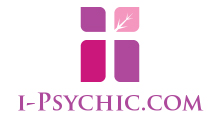Most people have at least heard of Tarot cards, but not nearly as many have interacted or researched the real meaning behind the cards. Some feel it is little more than a New Age hobby while others immediately picture a traveling county fair with a dark booth draped in shawls and a slightly aging Gypsy woman sitting by a round table ready for a creepy reading. There is mystery, darkness, and the unknown surrounding Tarot, but there is no need for such fear of this form of divination tool. If you truly explore the origins of Tarot, it has roots as an Italian card game and has been around for centuries with a variety of uses. The exact uses of Tarot cards can be surprising.
Tarot Cards
Though there are numerous versions of Tarot cards, the most common today is the Rider-Waite deck which first appeared in 1909. The deck has 78 cards divided into the Major and Minor Arcana. The Major Arcana has just 22 cards that represent archetypes. The archetypes include the emperor, judgment, the fool, justice, and the wheel of fortune. The remaining cards make up the Minor Arcana and are divided into suites known as swords, wands, pentacles, and cups. Each suit corresponds to the four elements and their related qualities. The qualities include:
- Swords – Representative of air and the east; focused on communicative and mental abilities
- Wands – Representative of fire and the south; focused on creativity
- Pentacles – Representative of earth and the north; focused on boundaries, sensations, and form
- Cups – Representative of water and the west; focused on feelings and emotions.
Each card has a unique image and each deck may come with its own style for the images. Some decks will have words or sayings, while others only contain drawings or illustrations in color or black and white. Depending on the deck you choose, more or fewer cards may also be present.
How It Works
Tarot cards can be used by anyone, but for professional readers, the readings may be more accurate due to practice with the cards and general ability. Whether just starting or a practiced reader, a reading begins with a focus on a specific question. A single card can be drawn to offer insight into the question. Other forms of readings can offer more detailed information in a specific area like work, love, or even health. The thing to remember is that a reading is about current circumstances and is not set in stone for future events. A change in your lifepath is possible if you make changes based on the reading.
The unique aspect of Tarot is that it changes for each person. While the cards hold specific meanings, the meanings are up for interpretation based on the reader and the one receiving the reading. For example, the cards are based on the elements. Some may hate the water and the presence of multiple water cards could mean an emotional time period is coming. For some, this can be horrible, but for others, this could be something that is welcomed as an outlet. Tarot is used as a tool, something to help people get to know themselves on a deeper level. It is not something to fear, but something to embrace and learn more about over time.


I appreciate the detailed breakdown of the different suits and their associations with elements. It offers a clear framework for understanding the qualities each suit represents, which can be quite useful for both novices and experienced readers.
The historical context provided for Tarot cards is quite enlightening. I was particularly intrigued by the Rider-Waite deck being the most common version today, and its origins dating back to 1909.
Yes, it’s fascinating how something that appears esoteric has such well-documented historical roots. The card divisions into Major and Minor Arcana also offer a structured approach to understanding their usage.
The emphasis on Tarot being a personalized tool rather than something to fear is a key takeaway. It encourages a more open-minded approach to understanding and potentially integrating Tarot into one’s life.
Absolutely. This perspective can help dispel many misconceptions people might have about Tarot, making it more accessible and less intimidating.
The explanation on how Tarot readings are subject to interpretation is crucial. It highlights that while the cards hold specific meanings, personal and contextual factors greatly influence the outcome of a reading.
I found the section on how Tarot is not set in stone for future events but rather a tool for self-reflection quite refreshing. It demystifies the idea of Tarot as a deterministic practice and instead promotes it as a means for personal growth.